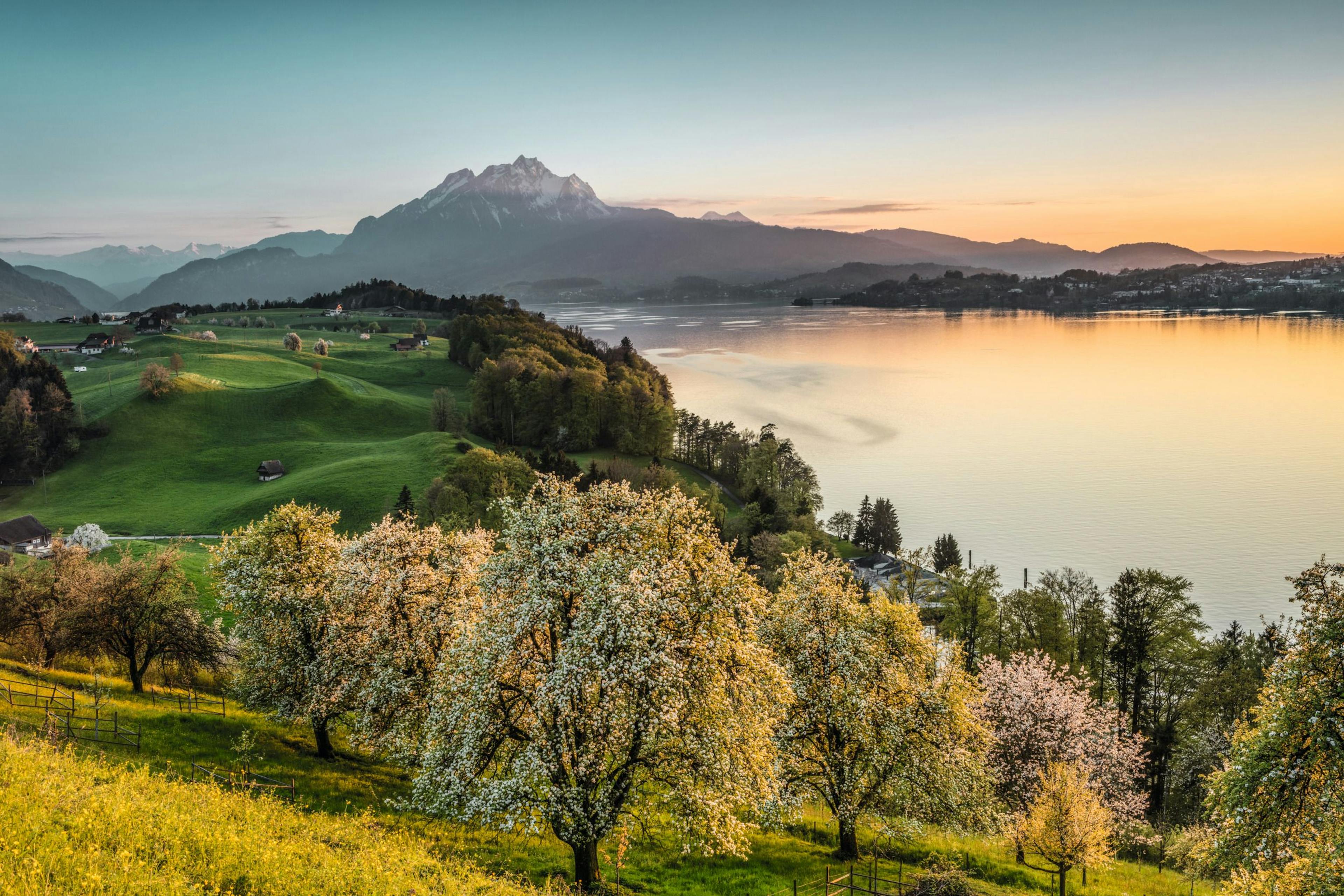
The weather in Switzerland - everything you need to know
What is the weather like in Switzerland? It is as varied as the country itself. The Swiss Alpine massif plays an important role. But there are many other influencing factors that determine rain or shine. In this article you will learn everything you need to know about the weather in Switzerland.
The weather in Switzerland is a colorful bouquet of diverse seasons and local peculiarities. Often, at the end of summer, you hear the cynical saying, "This year, summer in Switzerland took place last Thursday." Fortunately, the reality looks much better The geographical location as well as the mountains are decisive factors for the multi-layered and changeable weather in Switzerland. The altitude of a place is particularly determinant of the weather. In some places the alpine winter does not end even in summer. In order to prepare you optimally for your trip, you will find insightful information about the weather in Switzerland here. Let this article surprise you, so that the climate does not become a surprise itself.
The four seasons in Switzerland
In Switzerland you will experience four completely different seasons. You can find out more in the following overview. How the weather behaves in the Alps is discussed in a separate chapter
Spring in Switzerland
Spring begins in March. Nature awakens from its winter sleep in a delicate green. You will encounter daytime temperatures around 15 °C, longer days with around 12 hours of daylight and changeable weather. From snowfall to sun-drenched days, everything is possible in spring.
Summer in Switzerland
With June comes summer. Cornfields ripening in the sun bear witness to the warm season. You will encounter daytime temperatures around 25 °C, long days with over 15 h of daylight and stable weather. The long summer days and high temperatures invite to swimming and many other outdoor activities.
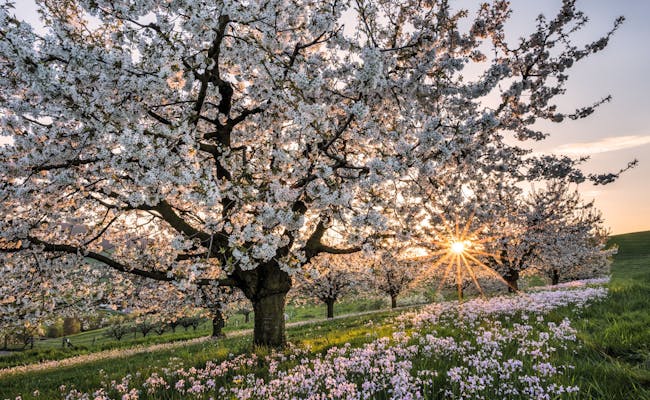

Autumn in Switzerland
Autumn begins in September. Falling leaves herald the grape harvest in red-gold vineyards. You encounter daytime temperatures around 15 °C, shorter days with around 11 h of daylight, and changeable weather. Autumn is characterized by the mild sunshine hours of the Indian summer and the wet, gray foggy days.
Winter in Switzerland
Winter begins in December. Snow-covered fir trees in a white dream landscape are part of the postcard picture of Switzerland. You encounter daytime temperatures around 5 °C, short days with around 9 h of daylight and rather stable weather. Minus temperatures and snow in the lowlands are increasingly the exception due to global warming. The situation is quite different at higher altitudes, where temperatures often drop well below the zero degree mark
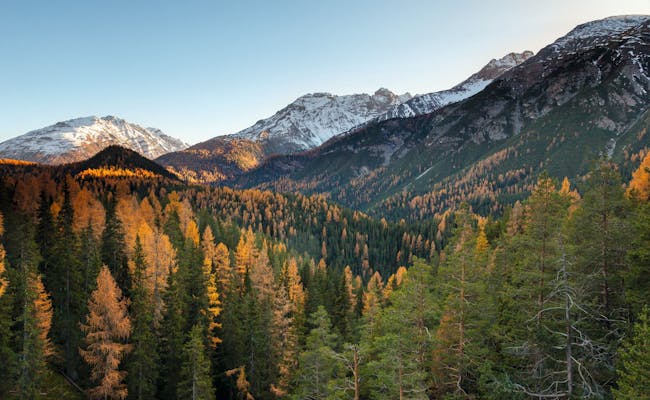
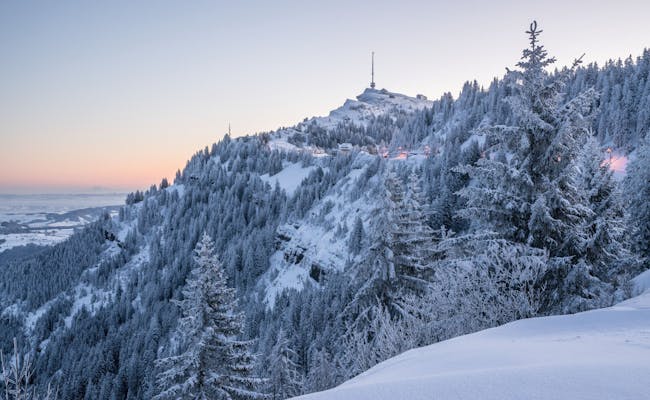
The weather in the Alps
The Alps are a weather world of their own. Nowhere is the weather as unpredictable as here. The alpine massif forms the climatic dividing wall between north and south. In addition, you will find distinct local weather patterns on steep slopes and in valleys. The higher, the colder. This law of nature prolongs the cold season and aggravates the local climate. In addition, sudden weather changes are common and can be dangerous. That's why experienced climbers and hikers keep a respectful eye on alpine weather. When planning your excursion, the usual weather forecasts are part of the basic equipment. Good weather apps and the many live webcams are a valuable asset.
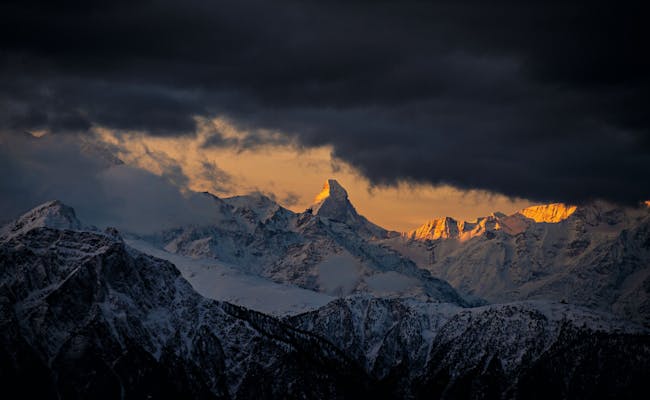
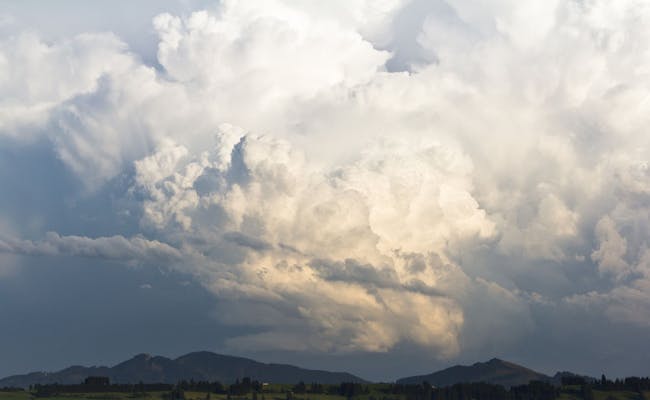
Temperatures in Switzerland
In the summer months of July and August, the average daily temperature ranges between 18 and 28 °C. In winter it varies between -2 and 7 °C. Temperatures around 15 °C sometimes climb to 20 °C and dominate both spring and autumn. The following rule of thumb applies: every 100 m upwards, there is a drop in temperature of about 1 °C. Thus, in high alpine locations, you will encounter thick layers of snow even in summer. North of the Alps it is cooler than in sunny Ticino. Southern slopes, wide valleys and lakes, on the other hand, receive more sun Thanks to these different temperatures, both fir and palm trees grow in Switzerland. The warmest areas include Lake Geneva, the Rhone Valley and the valleys in the south of Ticino. The coolest are naturally all places in the high mountains. Here you can find an overview of the temperatures as well as the precipitation of individual main places in Switzerland:
The average weather in Switzerland in January
| City | Max. Temp (°C) | Min. Temp. (°C) | Number of Rainy Days |
|---|---|---|---|
| Geneva | 5 | -1 | 9 |
| Bern | 2 | -4 | 12 |
| Zurich | 4 | -1 | 10 |
| Basel | 4 | -3 | 13 |
| Zermatt | 1 | -7 | 9 |
| St. Moritz | -2 | -11 | 9 |
| Lugano | 7 | 1 | 5 |
The average weather in Switzerland in April
| City | Max. Temp (°C) | Min. Temp (°C) | Number of Rainy Days |
|---|---|---|---|
| Geneva | 15 | 4 | 8 |
| Bern | 14 | 4 | 13 |
| Zurich | 15 | 6 | 11 |
| Basel | 16 | 4 | 12 |
| Zermatt | 11 | 0 | 12 |
| St. Moritz | 8 | -2 | 9 |
| Lugano | 17 | 8 | 10 |
The average weather in Switzerland in July
| City | Max. Temp (°C) | Min. Temp (°C) | Number of Rainy Days |
|---|---|---|---|
| Geneva | 26 | 14 | 7 |
| Bern | 23 | 13 | 13 |
| Zurich | 25 | 15 | 11 |
| Basel | 26 | 13 | 12 |
| Zermatt | 21 | 9 | 14 |
| St. Moritz | 18 | 7 | 14 |
| Lugano | 28 | 18 | 8 |
The average weather in Switzerland in October
| City | Max. Temp (°C) | Min. Temp (°C) | Rainy Days Count |
|---|---|---|---|
| Geneva | 15 | 7 | 9 |
| Bern | 13 | 5 | 12 |
| Zurich | 15 | 8 | 9 |
| Basel | 15 | 6 | 11 |
| Zermatt | 12 | 2 | 10 |
| St. Moritz | 9 | 0 | 9 |
| Lugano | 17 | 10 | 8 |
Swimming Temperatures of Swiss Lakes and Rivers
With well over 1,000 lakes, countless rivers, and streams, Switzerland is known as the water castle of Europe. It takes a max of 20 minutes by car to reach the nearest body of water in this country. The swimming temperatures of the lakes average around 20 °C in the height of summer. In the mountains, you'll find refreshing 17 °C, while in lower areas it can reach up to 26 °C. Here’s a list of 10 recommended lakes, along with their swimming temperatures:
- Lake Constance: This significant lake at the tripoint has swimming temperatures ranging from 19 to 21 °C in summer.
- Lake Geneva: The mighty and picturesque lake boasts swimming temperatures between 21 and 23 °C in summer.
- Lake Zurich: Experience urban swimming pleasure with temperatures of 22 to 24 °C.
- Lake Lugano: Here, you immerse yourself in southern flair in Ticino, with swimming temperatures from 20 to 26 °C.
- Lake Maggiore: This Mediterranean gem in Ticino reaches about 22 to 24 °C.
- Lake Lucerne: A tourist highlight in the heart of Switzerland, it has swimming temperatures between 18 and 22 °C.
- Lake Neuchâtel: The largest lake entirely within Swiss territory boasts swimming temperatures of 21 to 25 °C.
- Lake Brienz and Lake Thun: In the enchanting lake landscape set against a stunning mountain backdrop, you can swim in cool water from 18 to 22 °C.
- Lake Klöntal: A dream destination for hikers in Glarus, it has a swimming temperature of 18 to 20 °C.
- Lake Oeschinen: In this deep blue glacial lake with unique charm, you’ll swim in cool waters of 17 to 19 °C in summer.

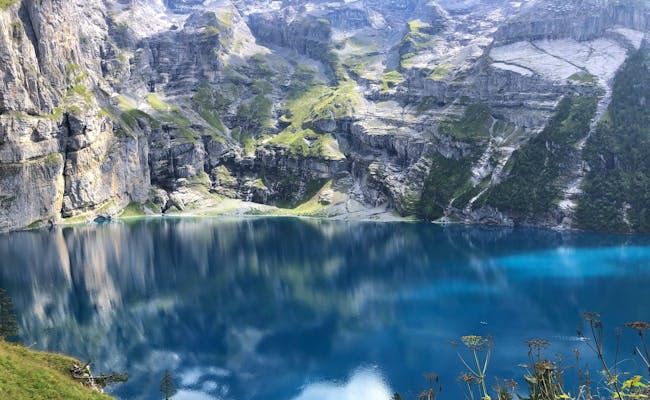
Our watercourses also invite you for a cooling swim. Streams from the Rhine (315 km) to the Rhone (264 km), mountain rivers like the Verzasca (30 km) to countless streams. Water temperatures range around 13 °C, depending on altitude. In summer, the temperature can exceed 15 °C in places.
When is the peak season in Switzerland?
There isn't a universally valid peak season in Switzerland due to its diverse climate. Increased bookings or prices are typically seen in mountain regions around Christmas, in February, and during the summer months. Some tourist destinations are nearly deserted in May or September. In Ticino, expect high prices and limited availability from June to October. The good news is: you can visit Switzerland at any time. Every season is suitable for a visit. So there isn't one best time to travel to Switzerland, just your best time to travel. In our article The best time to travel to Switzerland, you'll find information and tips on this topic.
Insightful information about the weather in Switzerland
We are happy to answer any other questions you may have about the weather in Switzerland below
When does it snow in Switzerland?
In some elevated regions, snow can last for over six months. In contrast, in the central lowlands, you only see it for a few weeks. Climate change is increasingly shortening these white periods. When the first snow falls, winter has officially arrived for many. Here are the average results for selected locations based on measurements from the last 90 years:

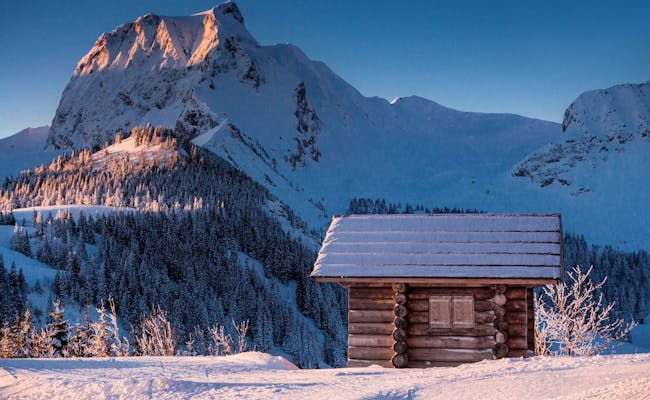
Rain in Switzerland
The amount of precipitation varies greatly across Switzerland. Most of it falls in our alpine regions, particularly in the Northwestern Alps, as the clouds typically arrive from the Atlantic. However, the wettest place in Switzerland is the Säntis in Eastern Switzerland. The driest area is the Rhône Valley in Valais, where even southern fruits can grow. Some regions in the southeastern Engadine are also very dry. In Switzerland, the rainiest time starts in late spring and stretches into the summer. You can expect the most rainy days and the highest amount of precipitation during the lovely month of May.
The Hottest Month in Switzerland
While July gives you the most hours of sunshine, continuous measurements over the last 70 years make it clear: August, with an average temperature of almost 23 °C, is the hottest month of the year. This summer month reaches peak values of over 35 °C.
The best Swiss weather apps
The complex and changeable weather in Switzerland requires the most accurate weather forecast and local weather monitoring possible. Good weather apps as well as the numerous live webcams are particularly well suited for this. Here you can find some helpful tips.
- The Meteo Schweiz app of the official Swiss weather authority provides you with the desired weather forecast for all locations in Switzerland. You'll also find the latest readings, weather warnings and a weather blog. Zoomable maps and live tiles are also included
- SRF Meteo, the weather app of Swiss Television, offers you current weather forecasts for Switzerland and Liechtenstein for free. This app is also iOS and Android compatible. You also get high-resolution panoramic images from live webcams. This app received the "Best of Swiss Apps" award
- LANDI Wetter is the preferred weather app of Swiss farmers. So the app for full professionals when it comes to weather. You get everything your meteorologist heart desires: the current weather forecast, rain radar with precipitation forecast for the next 24 h, weather warnings (thunderstorms, black ice or storms), Swiss ski weather or bathing temperatures. This app definitely deserves a download. You see, the weather in Switzerland is very diverse and varied. It's as colorful as our forests in autumn or our meadows in spring. No matter when you come, where you stay or what you want to do: The right weather will be found.
Discover leisure activities
Book NowTop Destinations
Top Activities
